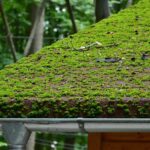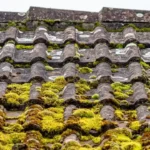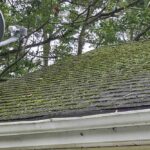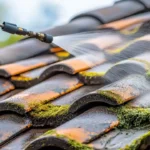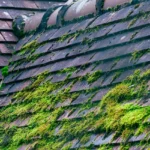Roof drainage erosion is a common problem that many homeowners face. If not addressed, it can lead to significant damage to your home. Understanding how to prevent roof drainage erosion is crucial for maintaining the integrity of your roof and the overall structure of your home.
In this article, we will explore various strategies that can help you effectively manage roof drainage and prevent erosion. By taking the right steps, you can protect your home from potential water damage and prolong the life of your roof.

Understanding Roof Drainage Erosion
Before diving into prevention techniques, it’s important to understand what roof drainage erosion is. Essentially, it occurs when water from your roof is not properly channeled away from your home. This can result in water pooling around your foundation, leading to erosion and potential structural issues.
Importance of Proper Roof Drainage
Proper roof drainage is essential for several reasons. It helps prevent water accumulation, which can lead to leaks, mold growth, and even foundation damage. Additionally, effective drainage reduces the risk of erosion, protecting your landscaping and the structural integrity of your home.
Common Causes of Roof Drainage Erosion
Several factors can contribute to roof drainage erosion. Some common causes include clogged gutters, improper slope of the roof, inadequate downspouts, and poor maintenance. Identifying these issues is the first step in preventing erosion.
Clogged Gutters
Gutters play a crucial role in directing water away from your roof. However, when they become clogged with leaves, debris, and dirt, water can overflow and cause erosion. Regular gutter cleaning is essential to prevent this issue.
Improper Roof Slope
The slope of your roof determines how effectively water is channeled away. If the slope is too shallow, water may not drain properly, leading to pooling and erosion. Ensuring the correct slope is important for effective drainage.
Inadequate Downspouts
Downspouts are responsible for carrying water from the gutters to the ground. If they are too short or improperly positioned, water can accumulate around your foundation, causing erosion. Make sure your downspouts are installed correctly to prevent this issue.
Poor Maintenance
Regular maintenance is key to preventing roof drainage erosion. This includes cleaning gutters, inspecting downspouts, and checking for any signs of damage. By staying proactive, you can address potential issues before they become major problems.
Strategies for Preventing Roof Drainage Erosion
Now that we understand the causes of roof drainage erosion, let’s explore some effective strategies for prevention.
Install Gutter Guards
Gutter guards are a great way to prevent debris from clogging your gutters. They act as a barrier, allowing water to flow freely while keeping leaves and debris out. This can significantly reduce the risk of overflow and erosion.
Ensure Proper Slope
As mentioned earlier, the slope of your roof is crucial for effective drainage. If you suspect that your roof slope is inadequate, it’s important to consult with a professional. They can assess the situation and make any necessary adjustments to ensure proper water flow.
Extend Downspouts
If your downspouts are too short, consider extending them to direct water further away from your foundation. This simple adjustment can prevent water from pooling around your home and causing erosion.
Regular Maintenance
Regular maintenance is key to preventing roof drainage erosion. Make it a habit to clean your gutters regularly, inspect your downspouts, and check for any signs of damage. By staying proactive, you can address potential issues before they become major problems.
Additional Tips for Effective Roof Drainage
In addition to the strategies mentioned above, there are a few more tips that can help you maintain effective roof drainage.
Use Splash Blocks
Splash blocks are placed at the end of downspouts to direct water away from your foundation. They help prevent erosion by dispersing the water over a larger area. Consider using splash blocks to further protect your home.
Install a French Drain
A French drain is a trench filled with gravel or rock that redirects surface water away from your home. It is an effective solution for preventing erosion and managing excess water. Consult with a professional to determine if a French drain is suitable for your property.
Consider Rain Barrels
Rain barrels are a sustainable way to collect and store rainwater for future use. They can help reduce the amount of water flowing through your gutters and downspouts, minimizing the risk of erosion. Check out more about rain barrel systems for more details.
Inspect Roof Flashing
Roof flashing is a crucial component that helps prevent water from entering your home. Regularly inspect your flashing for any signs of damage and make necessary repairs to ensure proper drainage.
Preventing Roof Drainage Erosion: A Summary
Preventing roof drainage erosion is essential for maintaining the integrity of your home. By understanding the causes and implementing the strategies mentioned above, you can effectively manage your roof drainage and protect your property from water damage.
Remember to regularly clean your gutters, ensure proper roof slope, extend downspouts, and perform routine maintenance. These simple steps can go a long way in preventing erosion and preserving the structural integrity of your home.
For more tips on roof maintenance, check out our roof maintenance checklist.

FAQ
How often should I clean my gutters?
It’s recommended to clean your gutters at least twice a year, in spring and fall. However, if you have a lot of trees around your home, more frequent cleaning may be necessary.
Can I install gutter guards myself?
While some gutter guards can be installed by homeowners, it’s always best to consult with a professional to ensure proper installation and functionality.
What should I do if I notice erosion around my foundation?
If you notice erosion around your foundation, it’s important to address the issue promptly. Consult with a professional to assess the situation and determine the best course of action.
For more information on drainage solutions, you can visit this guide.
This article contains affiliate links. We may earn a commission at no extra cost to you.




